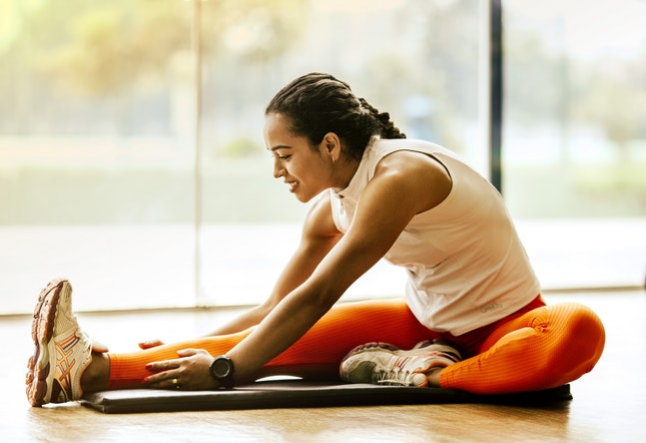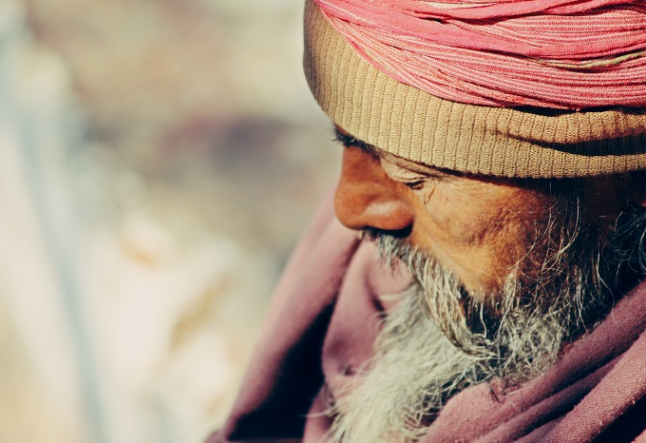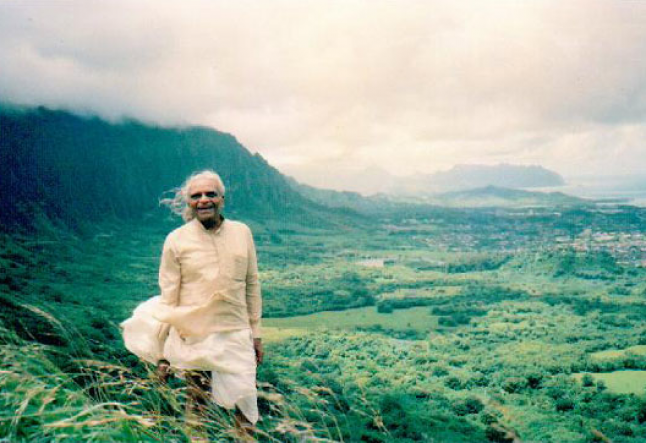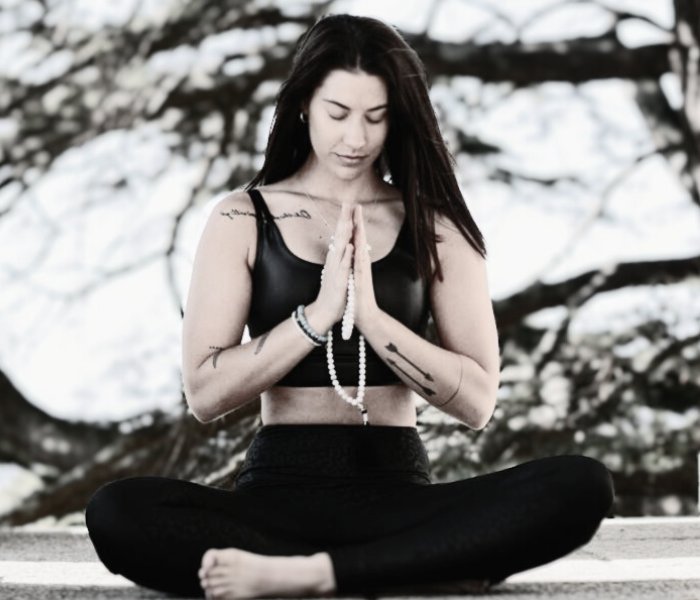how yoga can help you to improve your mental and emotional health

eight yogic limbs – yama, niyama, asana, pranayama, pratyahara, dharana, dhyana and samadhi
The subject of this article is deeply personal to me, as it is what brought me to practice asanas initially. Suffering from mental stress, emotional fluctuations, and weakened muscle pains, I realized how important yoga is as an ethos and way of living. It’s an incredible coping mechanism when stress often becomes overwhelming.
Yoga is much more than just practicing physical asanas. It brings awareness, relaxation, and routine to one’s life by not only conditioning the body, but providing mental focus (one-pointedness) and self-discipline during one’s personal practice.
In today’s modern world of constant distractions and temptations, one’s mind and focus can very easily become agitated, unsettled and fractured. The very definition of yoga is restraining the mind from various forms or in other words; ‘the suspension of the fluctuations of the mind.’
The eight limbs of yoga and the sutras are uniquely positioned as a lifestyle choice that keeps contemporary day to day stress in check.
The eight yogic limbs consist of Yama, Niyama, Asana, Pranayama, Pratyahara, Dharana, Dhyana and Samadhi. It is through the devotion and application of these outlines one can gain an elevated mastery over their life.
Yama and Niyama are the foundations upon which one should lead their lives. If these rules are followed your karma will be minimized, you will lead a more peaceful, happy life. You will feel more centered, content and self-aware.
During the practice of asanas, pranayama, and meditation, one will gradually attain the next four limbs of yoga.
These center around consciously drawing the awareness inward, detaching oneself from external stimuli, and fixing the mind on a single point. With practice, the mind’s focus will strengthen to the point of heightened awareness.
It is during these super-reflective states that one’s true nature is revealed to the consciousness. Detachment, single-minded focus, separation from ego, oneness with nature and those in your life, and intense interconnectedness are all feelings that one can feel or express as they progress through the eight limbs of yoga.
Asana
For those that are time-constrained, one should employ a simple routine in their morning self-practice to receive the maximum benefits of yoga. One can attend classes to deepen their practice and build on the benefits provided. For that purpose, I will describe the asana ‘Surya namaskara.’ It is a sequence of eight poses that are collectively referred to as ‘salutations to the sun.’ These are generally practiced in the morning at the start of a yoga routine to activate the Pingala energy and warm up the body. It helps the yogi sync their breath with each of the asanas. Together with the varied drishtis and body alignment, ‘Surya namaskara’ is the best-known asana.
Sequence
Begin in Samasthiti (also known as Tadasana). Stand with your feet together, bring the body into a straight vertical line. Engage your moolabunda by scooping your buttocks and engaging the glutes. Activate the Uddiandabunda to flatten the abdomen. Inhale using thoracic breathing, lift the shoulders and roll them back and downwards. Your arms and fingers should actively point straight downwards. The Drishti (or, focus) is straight ahead.
1. Pranamasana
From ‘equal pose,’ bring your hands into prayer pose by placing your palms together, your thumbs touching your sternum, elbows at your side. Use this brief pose to re-centre your focus on the upcoming practice. One may take three breaths on the very first pranamasana.
2. Hasta Utthanasana
From prayer pose, keep the breath in and raise the arms in line with the ears, gaze towards the thumbs. Keep the buttocks engaged and bend the kyphotic curve of the thoracic spine (not the lordotic lumbar region).
3. Padahastasana
From your raised arm pose, keeping the spine and arms straight, exhale and lower the torso towards the ground. Gaze towards the toes and place the palm down on the ground or anywhere along the length of the shins. The bend should only come from the hamstrings and glutes, not the back.
4. Ashwa Shanchalanasana
From hand to foot pose, inhale and stretch the right leg back as is comfortable with the toes gripping the floor. Bend the right knee to the ground and push the pelvis forward into the left knee. The back should be bent, the arms straight and the Drishti on the eyebrow centre.
5. Parvatasana
From equestrian pose, exhale and move the left leg back. Push the buttocks upwards and outwards, gaze towards your navel. Keeping your arms straight, twist the inner elbow facing upwards and the armpits downwards. Try to keep the heels on the floor.
6. Ashtanga Namaskara
From mountain pose, hold the breath and lower the knees to the ground, then the chest and finally the chin. Keeps the hips and abdomen raised off the ground. Gaze towards your nose.
7. Bhujangasana
From the eight-part salutation, inhale and flatten the tops of the toes as well as the hips to the floor by pushing forward. Raise your torso and face upwards by pushing the elbows halfway up, keeping the elbows pressed against the rib cage. Gaze up towards your eyebrow center.
8. Parvatasana
From cobra pose, exhale and lift the hips to point them skywards by pushing with the arms, simultaneously turning the soles of the feet onto the ground.
9. Ashwa Shanchalanasana
From mountain pose, inhale and bend the left leg and bring the left foot forward, frame the foot with your hands and lower the right knee to the ground. Push the pelvis forward, arch the top of the back and gaze upwards
10. Padahastasana
From equestrian pose, exhale and bring the right foot forward next to the left foot. Straighten the legs as much as comfortable and bend the hips forward, keep the back straight throughout. The Drishti is the big toes.
11. Hasta Utthanasana
From padahastasana, inhale and raise the torso, stretch the arms above the head.
12. Pranamasana
Bring the hands down into prayer pose whilst exhaling to complete the first half of the series.
Repeat the twelve positions again to complete one round of surya namaskara. The difference in the second half is in the equestrian poses; in position 4.2 (16) stretch the left foot back instead. In position 8.2 (21) bring the right foot to the front and frame this foot.
The sun salutation activated your pingala energy; this is perfect in the morning to prepare you for the day ahead, to balance out the Ida energy experienced during the night.
Pranayama
It is good to perform Pranayama (breath control) in the morning just before your yoga practice. This is essential to the energy channels within the body and goes beyond just ‘breath control.’ A good pranayama to perform in the morning is Ujjayi Pranayama (psychic breath).
Sit in a meditation Asana comfortable to you with your eyes closed. Begin with normal breath and just be aware of your breath. Concentrate on the breath being drawn through the throat, but still through the nostrils. As you become accustomed to this technique, partly close off the glottis in the throat so that a soft snoring or humming sound can be heard only by the practitioner. Listen to the sound in your throat whilst adjusting to ‘yogic breathing’ (expansion of the abdomen, thoracic and shoulders during inhalation, then contraction during exhalation). Master the breath until it is long, deep and controlled.
The next step is to add the khechari mudhra to the practice by turning the tongue backwards and placing the underneath of the tongue on the soft upper mouth palate towards the back of the mouth. It is advised to perform five to ten minutes of Ujjayi breathing.
This particular pranayama tranquilizes and soothes the practitioner. It warms the body. The mind is stilled, it relieves insomnia. It slows down the heart rate and reduces blood pressure. It reduces the sensations of hunger and thirst. It is advised that very introverted people should avoid Ujjayi Pranayama.
Yogic diet
My advice for diet is to avoid processed foods, to be mindful of what you eat and to follow a plant-based diet. The eating of animals and animal-based products has a large karmic cost that desensitizes the soul and invites pain into one’s life. The human intestines are long like herbivores; herbivores have much longer intestines than carnivores. Meat rots in the digestive tract if kept too long. We have more molars than carnivores. We do not have claws for the catching and killing of prey.
According to Ayurveda medicine, one should eat foods for their dominant dosha; generally speaking, though each meal should have each of the different tasting foods, i.e. sweet, salty, sour, pungent, bitter and astringent. This provides balance to your diet and ensures that you are nurturing your doshas.
Related>>> Ziva Meditation
Meditation
Along with physical asanas, it is important to practice meditation. It centres the practitioner and stills the mind. The benefits can be felt in as little as five to ten minutes of meditation. There are many postures one can practice meditation in; seated, lying down and some even standing. My favorite meditation pose is half lotus (ardha padmasana). It is comfortable and easy to hold for extended periods.
Close your eyes and relax your body. Fold your index fingers into the bottom of your thumbs and place the palm down on top of the knees in Juana mudhra. Focus on your slow, deep, rhythmic breathing. If thoughts come unbidden, allow them to wash over you, but try experience them in a detached manner. Give yourself space and time to let them subside on their own, approach them with acceptance and peace. Continue in this ‘open monitoring’ state for five to ten minutes. Slowly bring your breath back to normal.
In conclusion, yoga is a timeless practice that has both physical and mental health benefits to the practitioner. It reduces anxiety and stress. It promotes a sense of well being and peace. It encourages the practitioner to focus and be in the present. It instills discipline.
To depart
The popularity of yoga today is a direct result of its ubiquitous access to the general public. It is for all to enjoy– young or old.



